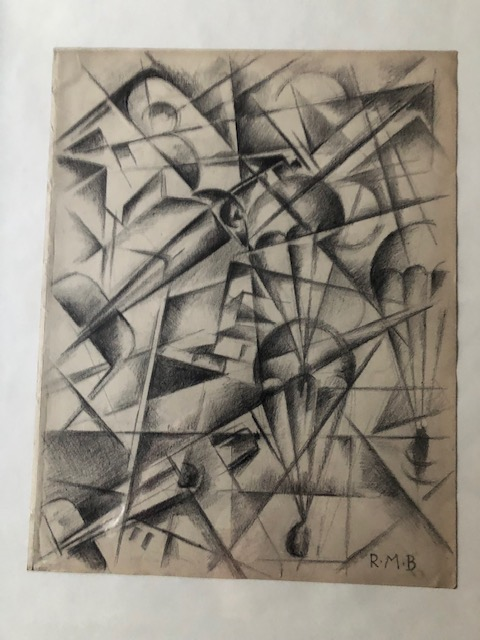R M B – Baldessari, futurist with nickname IRAS
Prof. Francesco Carelli, University of Milan
He was born in Innsbruck, 1894. In the years of his adolescence in Rovereto the drawing professor Luigi Comel saw his drawings and convinced his father to enroll him in the Academy of Fine Arts in Venice. There he had as masters Guglielmo Ciardi for painting, and Emanuele Brugnoli, for engraving.
In 1914 he graduated and won the Scala dell’Accademia Award for landscape. He adhered to Futurism and realized the first experimental paintings by studying the “masters”: Carrà and especially Umberto Boccioni.
In 1915, he moved with his family to Florence, where he was a student of the S. Croce School of Art and at the Caffè “Giubbe Rosse” he had his first contacts with the Florentine Futurists.
In 1916, he was active with the Futurists of the Tuscan group: Primo Conti, Achille Lega, Emilio Notte, Ottone Rosai, etc. His futurist style, after experimenting with the masters and looking at cubism, began to take shape, and this was time for his first futuristic engravings. Travelling to Milan , he got contacts with Marinetti and the Lombard Futurists, for long time. In 1919, he was again in Milan for the preparation of the “Great National Futurist Exhibition” of Palazzo Cova, in which he participated with 14 paintings. The exhibition moved then to Genoa.
After staying in Padua, with a Futurist solo exhibition at the “Triveneta”, he travelled to the Baltic and North Sea countries. Always moving through Europe, he participated in the Futurist Exhibition in Paris in 1920.
During 1922 / 23, in Germany, he met and became friend with Liebermann and Archipenko, Justus Bier, Vordemberge-Gildevart. He also met Kurt Schwitters and helped to build the Merzbau.
In 1923/ 24, he brought his painting to experiences of cosmic synthesis and, thanks to the attendance of Vordemberge-Gildevart (of the “Abstracts of Hannover” group), also to abstract compositions. In 1925, he came back to Italy with a definitive deployment on the figurative front and second Futurism, He presented works concerning aeropainting, trains, cyclists, with expressions of dynamism and speed . In Hamburg, at the “Italian Aeropainting Exhibition” he presented two works dating back to 1923/24: ” Alta velocità – High speed” and “Spirale tricolore su Roma – Tricolour Spiral over Rome”.
In 1939, he fled to Switzerland, in Morcote, because he was wanted by the OVRA ( fascist police services ) as Pablo Picasso had included him in the organization chart of the Socialist International. He remained there throughout the war. Towards the end of the year 1945 he returned to Rovereto.
In 1950, he was invited and participated with three works in the “Futurismus und Metaphysik” exhibition in Zurich. In 1957, Rinaldo Corti created a small monograph on his more mature futurist period (1916-1924) and in this way started his re-evaluation, giving input to the series of collective and personal exhibitions of works (paintings, drawings, engravings) of the futurist period.
In 1962, the first critical monograph, Roberto Marcello Baldessari. Painting and engraving – by Riccardo Maroni was published with autobiographical notes by the artist. Then followed a large personal exhibition with futurist works and a color illustrated catalog at the Toninelli Gallery in Milan. In addition Baldessari was included with nine reproductions of his works in the Futurist Archives, curated by M. Drudi Gambillo and T. Fiori.


